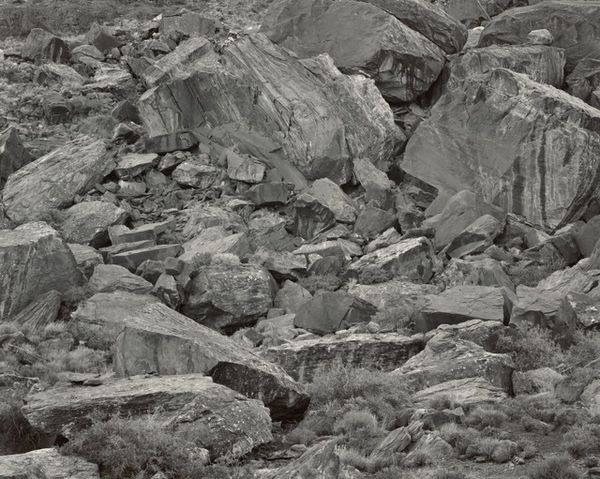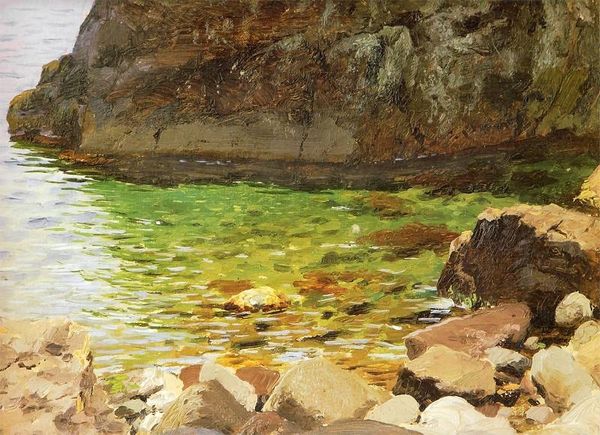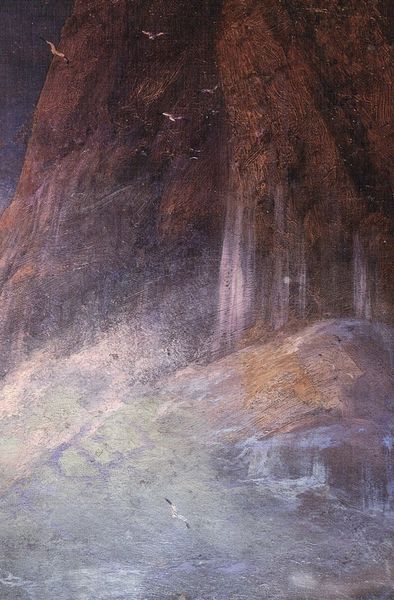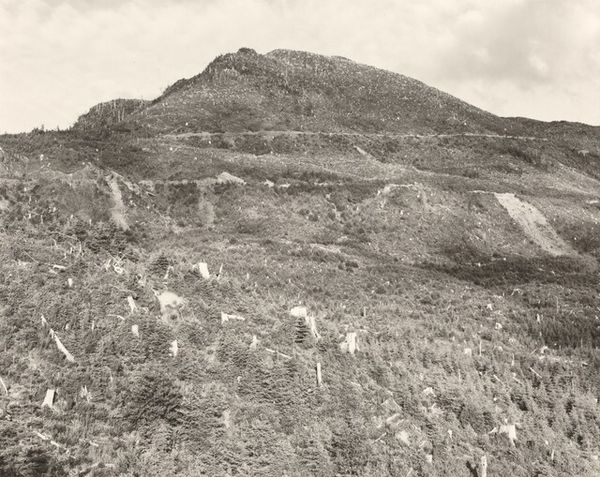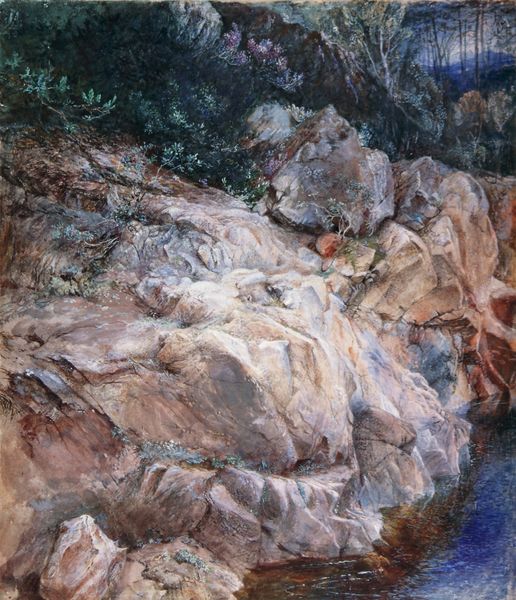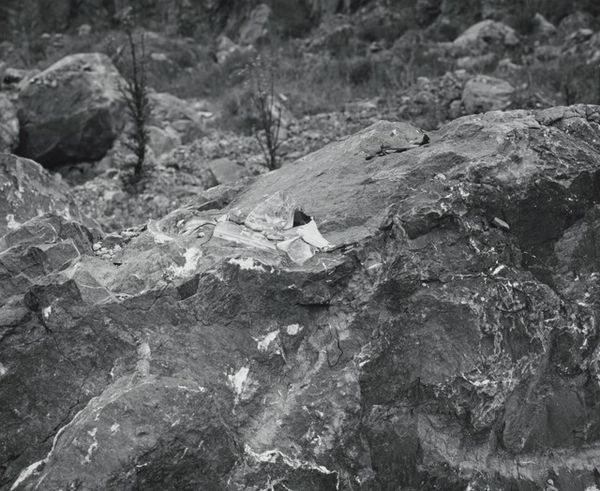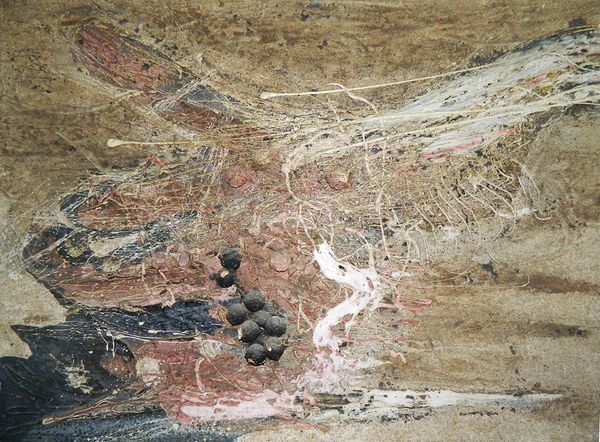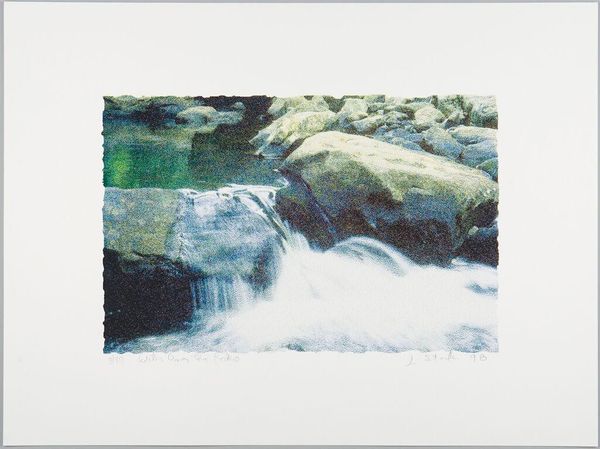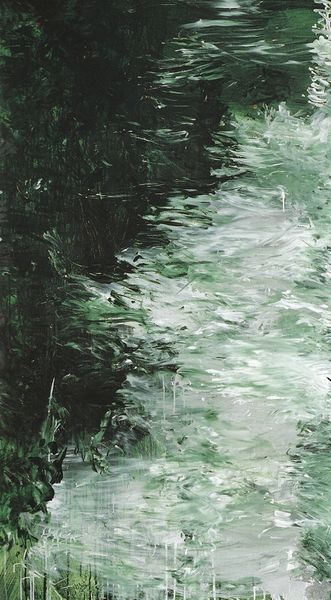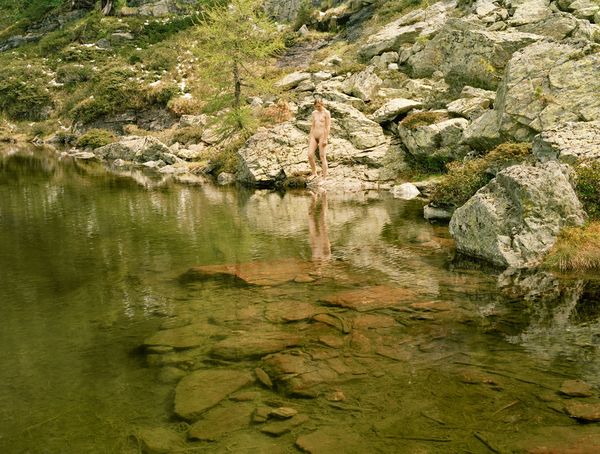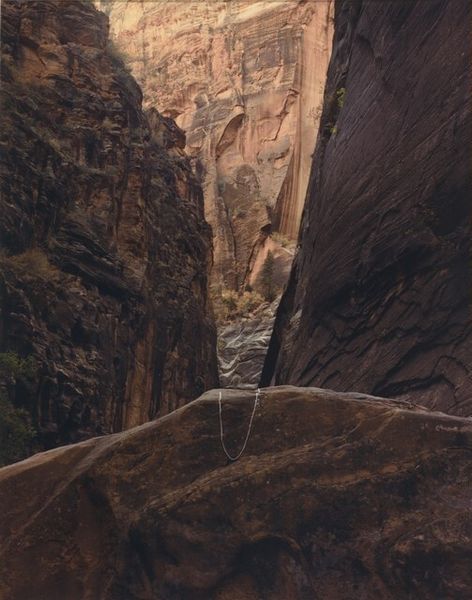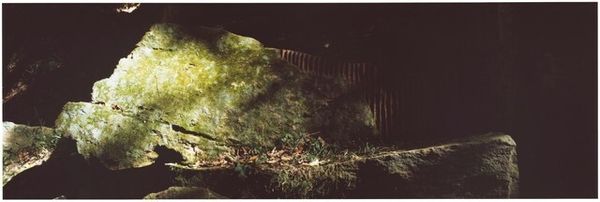
Mines #13, Inco-Abandoned Mine Shaft, Crean Hill Mine, Sudbury, Ontario Possibly 1984 - 2004
0:00
0:00
photography
#
contemporary
#
nature photography
#
landscape
#
nature
#
photography
#
environmental-art
#
realism
Dimensions: image/sheet: 46.2 × 58.8 cm (18 3/16 × 23 1/8 in.) mount: 66.04 × 76.2 cm (26 × 30 in.)
Copyright: National Gallery of Art: CC0 1.0
Curator: Edward Burtynsky’s “Mines #13, Inco-Abandoned Mine Shaft, Crean Hill Mine, Sudbury, Ontario” presents us with a starkly beautiful view into environmental degradation, potentially captured sometime between 1984 and 2004. Editor: My immediate reaction is to the strange tranquility despite the visible scars. The reflective water lends this discarded mine shaft an almost serene quality, an illusion given what we know about its origin. Curator: That juxtaposition is key. Burtynsky consistently explores how industry reshapes landscapes and subsequently communities. The abandoned mine embodies a post-industrial moment rife with socio-economic anxieties, lost labor, and ecological consequences. It demands we reflect on the political economies that lead to such spaces. Editor: Visually, the textures dominate. Look at the sheer roughness of the rock face contrasted against the smooth, almost unnatural, green of the water. Even the colors – rusty browns, sterile grays, and that odd viridescent hue – are laden with symbolic baggage concerning destruction and decay, yet rebirth too. Curator: The very act of photographing—of framing this particular view—serves as a kind of visual activism, a way of implicating the viewer. Consider the scale: dwarfing us while also subtly pointing to the disproportionate impact on marginalized communities nearest the extraction sites. Editor: What strikes me are the marks—almost ritualistic— etched into the rock walls. Those vertical red lines read as symbolic arteries, or perhaps like the lingering pain etched into the land, a collective trauma visualized. Do you think these are simply remnants of mining processes or is there something else at play? Curator: I suspect both practical and symbolic resonance. That ambiguity is what makes it such a potent image; those markings simultaneously reference the systematic processes of extraction and the residual impact left upon the natural world and perhaps, even the communities involved. Editor: Reflecting on it, Burtynsky presents a haunting tableau, revealing how landscapes become repositories for the complex legacies of industrial progress. A challenging but deeply resonant piece. Curator: Precisely, it forces us to confront the entanglement of progress and dispossession and consider pathways towards environmental justice and accountability.
Comments
No comments
Be the first to comment and join the conversation on the ultimate creative platform.
